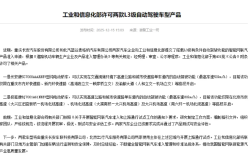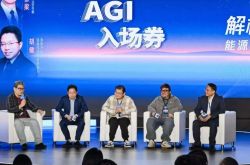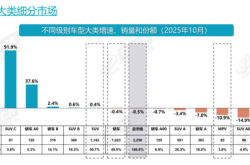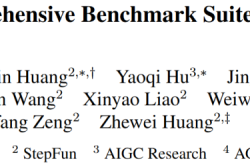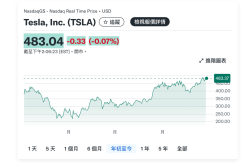China Unveils AI Investment Plan: The Next 'Four Trillion Stimulus'
![]() 08/28 2025
08/28 2025
![]() 617
617
This is poised to be a monumental investment plan worth tens of trillions.
On August 26, the State Council issued the "Opinions on Deepening the Implementation of the 'AI+' Action" (hereinafter referred to as the "Opinions"), clearly outlining that by 2027, China will spearhead the widespread and deep integration of AI with six key sectors, achieving an application penetration rate of over 70% for new-generation smart terminals and intelligent agents, and significantly enhancing AI's role in public governance. By 2030, the penetration rate will exceed 90%, with the smart economy emerging as a critical growth pole for China's economic development. By 2035, China will fully embrace a new era of smart economy and smart society development.
This marks a milestone for large-scale AI applications in China and a pivotal moment in the global power struggle.
Amid a new wave of technological revolution and industrial transformation, AI has emerged as a strategic high ground for global competition. Leveraging its unique advantages, China is reshaping the global AI landscape.
Similar to the surge of new energy vehicles, China aims to maintain a leading position in AI competition, stimulating effective consumer demand for new-generation smart terminals and intelligent agents, driving the economy towards a consumption-driven growth model, and fostering core technological innovations in industries such as GPUs, HBM memory chips, Chiplet, and other advanced packaging technologies, semiconductor equipment, and materials, paving the way for independent and controllable key industrial chains.
This is a battle for a trillion-dollar market and a national-level race.
Earlier this year, AI enterprises like DeepSeek and Unitree Robotics not only prompted global investors to reassess the immense potential of China's technological and manufacturing prowess but also offered a new destination for global hot money.
Post the mobile internet era, the battle for AI entry points and user penetration is intensifying. Unlike the mobile internet era, which focused on consumer-side "money-burning wars," AI-era competition will prioritize the intelligent transformation of industries in sectors like manufacturing, healthcare, transportation, and urban management, particularly the application of intelligent agents.
This signifies a longer investment cycle and higher technical barriers, but also guarantees more robust barriers upon success.
Concurrently, the popularization and promotion of applications will foster the development of independent and controllable AI computing chips and HBM memory chips, driving an investment boom in computing infrastructure.
Since last year, the market has anticipated a large-scale stimulus plan akin to the 2008 "Four Trillion" plan. Now, the large-scale AI investment and application driven by the "Opinions on Deepening the Implementation of the 'AI+' Action" will have a far greater impact on China's industries and people's lives than previous stimulus packages.
In this regard, the US's substantial AI investment serves as a precedent for China.
According to Brocade Research Institute's data analysis, AI capital expenditure (Capex) has become a significant driver of the US economy:
In the third quarter of 2024, AI Capex accounted for 16%-20% of real GDP growth in the US, masking weaknesses in other economic sectors.
In 2025, AI-related Capex will account for 21% of total Capex in the S&P 500, contributing more to GDP than consumer expenditures combined.
Not only chips but also nuclear power, liquid cooling, connectors, transformers, and stock prices have soared amidst this new railway construction investment.
1
The singularity moment of the new AI revolution commenced with ChatGPT in late 2022.
Initially and for some time after ChatGPT's release, the US held a clear lead. Tech giants like OpenAI, Google, and Anthropic continuously iterated leading models, establishing significant advantages in basic innovation, computing power, top talent, and capital investment.
In contrast, although China started slightly later, technology enterprises, scientific research institutions, and startups swiftly responded, investing heavily to catch up.
From 2024 to early 2025, the performance gap between large models in China and the US rapidly narrowed.
It has become increasingly common for any top-tier model to rarely remain at the top of international evaluation rankings for more than three months, with Chinese and American models alternately leading in a race to catch up.
According to the "2025 AI Index Report" by the Stanford Institute for Human-Centered Artificial Intelligence, after 2024, the capability gap between top AI models in China and the US narrowed from 20% the previous year to 0.3%, highlighting a visible narrowing of the gap.
Particularly, with the continuous emergence of large AI models like DeepSeek, QwQ-32B, and Manus, domestic large models have entered a period of explosive growth.
The latest data reveals that China has released 1,509 large models, ranking first among the 3,755 globally released.
Clearly, the official release of the State Council's "Opinions on Deepening the Implementation of the 'AI+' Action" has injected strong policy impetus into China's AI industry. The document identifies open-source ecosystem construction as the core breakthrough, promoting AI technological innovation and application through policy guidance, technology openness, and industry-university-research collaboration.
Currently, the global AI market exceeds $400 billion, with China leading in model development, data resources, and scenario applications. Amid policy dividends and the accelerated influx of industrial capital, China's AI industry is embracing an unprecedented strategic investment window.
2
Globally, AI competition primarily focuses on China and the US.
According to Brocade Research Institute's data, analyzing the investment data of tech giants from both countries over the past five years, the US has heavily invested in AI, while China lags significantly.
In the past five years, the combined AI Capex of four US tech giants—Meta, Microsoft, Amazon, and Google—reached RMB 5.36 trillion.
Meta plans to invest $66 billion to $72 billion in 2025, primarily in AI infrastructure including data centers and supercomputing clusters.
Google intends to invest over $75 billion to strengthen infrastructure within Google and for its cloud computing customers.
Microsoft aims to invest $80 billion, focusing on cloud computing and AI services.
Amazon plans to invest $100 billion, emphasizing cloud services, self-developed AI chips, and the global data center network.
While smaller in scale, OpenAI also plans trillions of dollars in future investments to build computing power infrastructure with Oracle and others. Musk has also entered the fray prominently through xAI and his new company "Macrohard".
In contrast, Chinese tech enterprises' investment scale is significantly smaller, with the combined Capex of seven major internet companies—Tencent, Alibaba, Baidu, JD.com, Kuaishou, Meituan, and NetEase—totaling only RMB 630 billion.
Alibaba announced an investment of RMB 380 billion over the next three years to build cloud and AI infrastructure.
Tencent's AI-related Capex surged to RMB 39 billion in the fourth quarter of 2024 and plans a "low double-digit percentage of revenue" increase in 2025, focusing on expanding AI computing power and promoting AI implementation in healthcare, gaming, and other scenarios.
ByteDance expects its AI Capex to reach RMB 160 billion by 2025, primarily focusing on AI computing power expansion, data center construction, generative AI, and content recommendation algorithm optimization.
China also faces challenges in computing power and data application. For instance, the US currently holds about 69% of global AI computing power, while China only has about 15%.
It's noteworthy that among AI's three elements—computing power, algorithms, and data—China has always had advantages in computing power and data.
The US's rapid progress in AI is both a pressure and a warning for China.
3
The "Opinions on Deepening the Implementation of the 'AI+' Action" issued by the State Council reveal two key aspects of China's future "AI+" layout:
One is the application side, and the other is the support side.
On the application side, new-generation smart terminals and intelligent agents are top priorities.
On one hand, new intelligent products and scenarios are emerging incessantly, with intelligent connected vehicles, wearable devices, and smart homes constantly introduced, and intelligent robots becoming a trend in factories and homes. On the other hand, various intelligent agents play crucial roles in production and life.
This trend is particularly evident in the consumer sector.
In the chapter on "Consumption Quality Improvement through 'AI+'", the "Opinions" propose to "vigorously develop new-generation smart terminals such as intelligent connected vehicles, AI smartphones and computers, intelligent robots, smart homes, and wearable devices".
For example, the application of autonomous driving in passenger and commercial vehicles.
Another example is the smart wearable device sector, considered the most marketable after mobile phones and PCs. AI+AR glasses are seen as the next-generation smart terminal entry point.
Intelligent agents, capable of understanding goals, autonomously planning and executing tasks, dynamically adjusting strategies, and achieving closed-loop operations, transform AI from a tool to a true partner. They also spawn a new trend of "intelligent assistants as new service entry points", widely participating in core processes like customer service, sales, operations, and R&D.
For instance, at the World Artificial Intelligence Conference (WAIC), Tencent unveiled the Hunyuan 3D World Model, the embodied intelligence platform Tairos, and the intelligent agent development platform. Zhongke Jincai has developed multiple industry-specific intelligent agents covering credit, investment research, and customer service scenarios. Chauming Technology, leveraging its self-developed Chauming Agent platform, integrates multiple large models' capabilities, demonstrating advantages in technology integration and application.
This signifies that intelligent agents are no longer mere auxiliary tools but can directly undertake tasks. Furthermore, Moore's Law applies to intelligent agents, with their task processing complexity doubling every seven months.
Additionally, embodied intelligence, the crucial AI carrier, will undergo revolutionary changes. Embodied intelligent robots will lead in large-scale deployment in picking, handling, and assembly scenarios. In July, Shenzhen UBTECH Robotics secured the largest single humanoid robot order to date, worth nearly RMB 100 million. Shortly after, Shanghai Zhiyuan Robotics and Hangzhou Unitree Robotics jointly won a large order worth RMB 120 million. Recently, Zhiyuan Robotics announced the deployment of nearly 100 Expedition A2-W robots in Fulin Precision's factory.
4
On the support side, the "Opinions" propose using "hard infrastructure" and "soft construction" as dual guarantees, coordinating development and security, and consolidating eight supporting systems: models, data, computing power, applications, open source, talent, policies and regulations, and security.
Among these, the most critical are key core technologies such as GPUs (Graphics Processing Units), HBM memory chips, and other high-end AI chips, as well as the AI basic software ecosystem.
Currently, from the national level to local governments and enterprises, all have embarked on their layouts.
In the AI chip sector, the domestic industry continues to release positive signals, with more "domestically designed" and "domestically manufactured" GPUs starting mass deliveries.
For example, the latest DeepSeek-V3.1 uses the UE8M0 FP8 Scale parameter precision designed for the next-generation domestic chip, indicating that future training and inference based on the DeepSeek model will likely leverage domestic AI chips more extensively.
When releasing Step 3, Jieyue Xingchen announced the establishment of the Model Core Ecosystem Innovation Alliance with nearly ten chip and infrastructure vendors. Suiyuan Technology's chips have initially achieved operation on Step 3.
In terms of computing infrastructure, as of June this year, China had 10.85 million standard racks of computing centers in use, with a smart computing power scale of 788 EFLOPS.
Moreover, computing centers are not just about computing power; energy optimization has become the key to the next generation of computing centers.
The International Energy Agency's "Energy and Artificial Intelligence" report shows that global data center electricity consumption reached 415 terawatt-hours in 2024, accounting for 1.5% of the global total and increasing at an annual rate of 12% over the past five years. It's estimated that data center electricity demand will more than double by 2030.
In 2021, OpenAI founder Sam Altman invested in the nuclear fusion startup Helion Energy, and Microsoft subsequently signed a power purchase agreement with the company, aiming to procure at least 50 megawatts of fusion power by 2028. In February 2025, Helion Energy successfully completed a Series F funding round of $425 million, achieving a total valuation of $5.4 billion, thereby setting a new benchmark for funding in the fusion industry.
On July 22, 2025, China Fusion Energy Co., Ltd. officially went public and secured significant strategic financing, resulting in an increase in its registered capital to RMB 15 billion. This marks the dawn of an unprecedented investment boom in the field of controlled nuclear fusion.
Notably, the "Opinions" document specifically outlines plans to "establish a series of national AI application pilot bases and industry-wide application platforms." These pilot bases serve as versatile capability platforms, accelerating the large-scale, standardized, and systematic development of AI applications. By deploying these bases in key sectors such as manufacturing, healthcare, transportation, finance, and energy resources, they aim to consolidate industry resources and capabilities, nurture AI professionals, promote application outcomes, incubate innovative entities, and foster an open ecosystem. This is achieved through the integration of the six core "AI+" initiatives.
According to the explanations provided by relevant officials from the National Development and Reform Commission in response to reporters' inquiries, "This initiative will crystallize common capabilities and significantly lower the barriers to entry for application innovation."
The era of AI accessibility for all has truly arrived.


